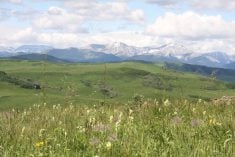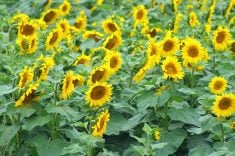The decision whether to use urea or ammonia should be based on price, availability of application equipment and personal preference.
But some rules for optimizing efficiency of fall fertilization remain the same.
The objective is to maintain nitrogen in the ammonia form to prevent loss in spring by leaching in sandy soils or denitrification under flooded soils.
Ammonium forms of nitrogen (anhydrous ammonia, urea and ammonium sulphate) are preferred since they are not readily lost by leaching and denitrification.
Ammonium nitrate (34-0-0) and liquid UAN (28-0-0) are less preferable, especially on soils subject to leaching or saturation in the spring.
Read Also

Gene editing digs deeper space in Canadian plant breeding
More Canadian research into crop variety development is incorporating gene editing, and one researcher notes that Canada’s regulatory approach to gene editing will help drive innovation
Banding nitrogen is more efficient than a broadcast application. Banding should be done to a depth of 7.5 to 10 centimetres (three to four inches), in spacings of 30 to 45 cm (12 to 18 in.)
Using narrower spacing causes problems because the nitrogen will not be as concentrated and will be more subject to nitrification.
Wider spacing may leave streaking in spring crops unless secondary tillage distributes the bands. But nitrogen efficiency is superior if fall bands are not disturbed or mixed in the spring.
Delay fertilizing until late fall when soils cool to 5 C.
Soil temperatures should be measured at the 10 cm (four in.) depth. Delaying the application will also minimize nitrogen uptake by weeds and volunteer crops.
If you apply early to avoid a freeze-up or snowfall, banding ammonium forms will minimize losses.














